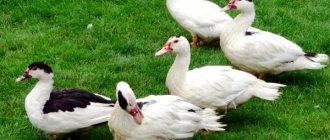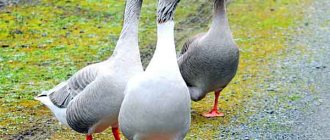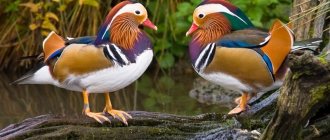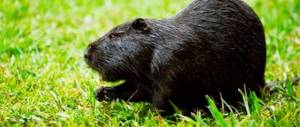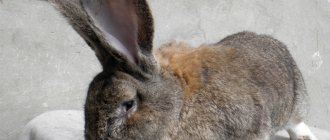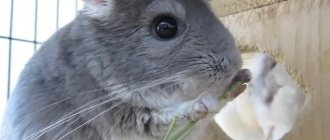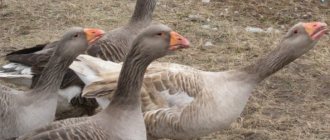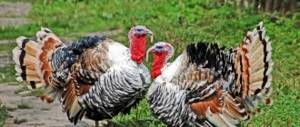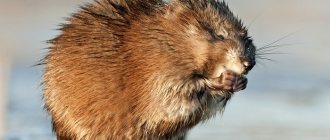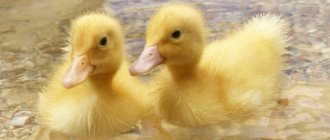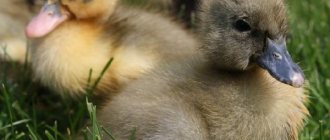Decoy ducks are popular for hunting. In ancient times, they were an excellent survival tool that helped in shooting the desired wild bird.
Today, the demand for them has not decreased, and the method causes a special sparkle of excitement in the eyes. Special preparation, knowledge of how to choose the right one, what to feed and hunting skills are the key to success.
Who is this decoy
The decoy duck is a group of domesticated birds that are similar in appearance to wild mallards. They are used for hunting waterfowl. During the hunt, they are released into a reservoir, and the hunter himself hides nearby in a boat or in a camouflaged hut. The domesticated one attracts wild drakes with its appearance and sounds. That's why they are called "screams".
At the moment the game lands on the water, the hunter shoots them with a gun. That is, a decoy duck is a kind of live bait. In total, there are several main breeds that show the best “hunting” skills: Semenovskaya (Nizhny Novgorod), Tula, Saratov, Penza, Voronezh.
DIY stuffed duck. Taxidermy. Making a stuffed bird at home
Contents of the article:
- Homemade stuffed decoy ducks: manufacturing secrets
- How many and what kind
- What can you make stuffed animals from?
- Stuffed animals made of polystyrene foam boards
- Penoplex stuffed animals
- Plywood scarecrow
- Stuffed animals made of wood
- Foam stuffed animals
- Materials and tools
- The process of making a stuffed animal
- A few words about the sustainability of homemade stuffed animals
- Stuffed drake with wings flapping in the wind
- What does an impromptu flock on the water look like?
Homemade stuffed decoy ducks: manufacturing secrets
Waterfowl hunting is perhaps the most popular and widespread. It is more accessible than others, since bodies of water - lakes, rivers, swamps - are available everywhere. And in terms of the number of trophies, hunting waterfowl will give odds to any other species. This is especially true for wild ducks. Not only an experienced hunter, but also a novice can shoot a hefty mallard, nimble teal, slender pintail or swift goldeneye. But attracting such birds and making them land on the water is not so easy, and shooting at them in flight is not always effective.
That is why most hunters use a stuffed decoy duck in this matter. They install it on the water, and they themselves hide nearby. Ducks flying over a pond notice their “relatives” and often sit down next to them. This is where the real hunt begins. And in order to feel all its excitement and add another trophy to your collection, it is not necessary to buy a bird figurine; you can make a stuffed duck yourself.
How many and what kind
It is not difficult. The main thing is that the dummy looks natural, is made in the pose of a resting or feeding duck and has a color close to natural. A stuffed animal with an unnaturally set head, tensely frozen on the water, or very vaguely reminiscent of the bird it is supposed to represent, is unsuitable. It will only scare away “relatives” flying past.
Why are decoy ducks bred?
Breeding and keeping decoy ducks at home is not done for the sake of obtaining eggs. In a year, these individuals can bring no more than 30–40 pieces, despite the fact that their size is quite small - their weight barely reaches 50 grams.
The main goal that hunters pursue when breeding is the preservation of a genuine domestic breed, which is famous for its vocal and behavioral characteristics. Many breeds are obtained by crossing domestic and wild ones. Outwardly, they look like wild ones, but they quickly get used to the hands and care of their owner.
Note! During hunting with decoys, only male drakes are caught, which makes it as gentle as possible for the general population of waterfowl.
Boot for decoy duck
In continuation of the article “Hunting with a decoy duck”, I would like to pay a little attention to the auxiliary material, namely the boot (or whip, as they often write on the Internet). A boot is a bracelet on the paw of a decoy duck, like a collar on a dog, designed to keep a wild bird from escaping. It is usually made from a piece of leather. But lately, for practical reasons, I have been using another option. I buy a plastic clamp for electrical wiring. I tighten it on the duck’s leg, bite off what’s unnecessary with wire cutters, and here’s a ring that won’t come off. If the clamp has a boss with a hole, then that’s great! We use the same clamp to attach it to a peg with a circle around which the duck swims. The clamp must rotate easily around the stake, otherwise the duck will not work properly. We connect the clamps to each other with a thin and durable cord. The color is preferably dark dirty, but not black or light. It is better not to use fishing line: a thick fishing line hinders the movements of the duck, and a thin one can get tangled faster than the cord. At first it may seem that this method has some kind of barbaric attitude towards a decoy. Nothing like this! All worries about excessive friction and abrasion of the duck’s foot into blood are in vain if the main condition is met - do not make an excessively long leash connecting the stake to the boot. The length should be such that the duck swims around the ring and is not able to escape to the shore. Then she will not make sudden movements that put pressure on the skin.
Well, the second point, which I do not neglect, is that every time after a hunt I bite off the collar from the duck’s leg so that it has the opportunity to rest. This is my personally verified experience, which has no Truth in the Higher Authority. For people with a warm heart and a reverent soul, another option is most likely suitable - a leather boot. There are several ways to attach such a strap. For example, you can take a piece of leather measuring 9x2 cm, cut from an old jacket, bag or worn-out boot. Fold it in half lengthwise and stitch it with wire. It is important that the thickness of the leather is at least 2 mm, otherwise it will tear. Do not forget that the water will cause the skin of the boot (or wing) to swell, and after drying it will shrink and be able to pinch the duck’s paw. You can try the second option: the boot is made from a strip of leather 15 cm long and 2 cm wide. A hole is made in the strip at a distance of 2-3 cm from the edge, through which the rest of the strap will be pulled. It turns out to be a ring. In the end, to create a boot for a decoy duck, you can steal not only an old bag from your wife, but also a nylon stocking. Tied with a double knot, it will work well for this task.
A few words about the platform on which the duck sits: The platform is a circle of plywood with a diameter of 25 cm and a height of 10-12 mm, which is connected with a self-tapping screw to a stake with a diameter of 5 cm. The length of the stake depends on the depth of the reservoir and is measured taking into account the immersion of the platform by 2 cm below the surface of the water. The platform and the stake must first be treated with stain or painted - this will last longer. This design must be strong, otherwise you will easily break it when driving it in. A stake with a circle is driven into the ground of the reservoir. This design holds the decoy duck in place. The circle itself should be hidden under water. The duck, freely swimming around it, crawls out onto its surface to dry, warm up and rest. It is necessary to take into account that the stake in the ground must stand firmly, otherwise there is a high risk of losing the decoy, which has happened to hunters more than once. To drive a stake into the ground, I use an ax, which, if necessary, can be used to cut out a new stake or shorten an old one. P. _ S. _ During my hunting experiments, not a single decoy duck was harmed. The same cannot be said about game birds, which easily took live bait coupled with a good-sounding blow decoy for duck.
Read after: Duck conversation or methods of luring with a wind decoy Preparing a decoy duck for hunting
What qualities should a decoy duck have?
Through crossing, long-term selection and breeding of special breeds, the main breeds of decoy ducks were obtained, which are famous for their “hunting” skills. They have a rather loud voice, which attracts wild drakes.
The sounds it makes are the usual quacking, however, it can vary in timbre, pitch, and volume. There is an opinion among hunters that the voice of a decoy duck can be considered good if it is close to a wild mallard. But this does not always become the key to a good hunt, because it is better when the voices are slightly different than to arouse the interest of wild individuals.
Which duck can become a decoy?
It is important to consider that external similarity is the main quality for decoy ducks. Their appearance attracts wild mallards. Otherwise, the landing bird may become frightened and fly away, and the hunter will never see his prey.
Advantages of this bird:
- The color of the feathers along the body is brown with a golden tint. The pattern on the back is clear, unlike the belly;
- the coloring of the feathers on the head and neck is slightly different - beige-brown or bright brown tones predominate, without a golden sheen;
- dark brown eye color;
- yellow-brown beak with a darkened, almost black tip;
- strong, high-set chest;
- arched back;
- whole body weight ranges from 1.3-1.7 kg;
- When quacking, a slight hoarseness is heard.
It is important! A crooked hump, tailbone, weak or blurred pattern on the feather, and a “clean” voice are the main enemies of hunting. Additionally, before launching the bird into the water, make sure it is healthy. Otherwise, you risk returning from hunting without the desired prey, and the “live bait” will not be able to stay in the water for long.
DIY decoy box
The bird cage can be made from plywood, fiberboard or cardboard. In addition, the cage can be made from welded mesh, used on fur farms. The cells of such a grid should be within 1-2.5 cm. The dimensions and shape of the box are made based on the type of hunting and what kind of transport the duck is transported.
The standard dimensions of the cage are 20 x 25 x 40 cm. A duck box can be made from scrap materials, for example, from an oil filter from a KAMAZ vehicle. The outer frame of the filter - the mesh can be bent into a rectangular pipe. The inner mesh must be cut and the lid made with a small allowance. The end is made measuring 20 x 25 cm, and the closing part is 22 x 27 cm. Such collars are bent and trimmed around the perimeter with a hammer. The hook and loops are made of wire, the remaining side of the mesh can be used to cover the remaining side and secure it with wire.
It is necessary to place cardboard at the bottom of the cage to prevent the bird from scratching its paws. If the duck's delivery vehicle is a car, then the box needs to be made a little larger, since cardboard needs to be inserted into it. During transportation, the duck may stain the interior of the car with droppings. It is more convenient to make a cage out of plywood for a car, but the road to the lake is dirty, and the duck does not always have to be placed dry in a box. In this regard, plywood and wooden boxes quickly become wet, dry out, and then rot.
Using cardboard makes things much easier. It can be easily dried, and you can also throw it away and replace it with new pieces. They can be found near furniture stores. For spring hunting it is better to take two ducks and a drake. This creates a strong effect. The drake quacks, and the ducks go crazy and quack in response to him. In autumn, the drake creates the presence of birds on the water. Therefore, the duck box is made 1.5 times larger in size.
Hunting and preparation
Carefully prepared decoy ducks for hunting practically guarantee a successful outcome of the event.
Features of hunting with a decoy duck
Hunting with a decoy is quite difficult, so it is important for beginners to study the recommendations for preparing for the hunt. Prepare everything you need in advance:
- weapons and ammunition supply;
- When going outdoors for the whole day, stock up on food;
- binoculars are useful for tracking game;
- a shovel for preparing a hole in an open area or a hut;
- wicker cage for carrying;
- game bag.
Explore the surrounding area: you can find a lot of feathers and down in the mallard roosting areas. For a calling duck, choose a hummock if it is well-fed, but for hungry ducks, it is preferable to use a mug with a boot or sinker.
It must be released into the water early in the morning before dawn. The drakes will listen to the quack and noise without hesitation and will swim nearby. Provided that additional decoys are available, the hunter is almost guaranteed success. The hunting season lasts until the first frost.
What is a boot and why is it needed?
Boots for decoy ducks
The rules for landing a decoy duck on the water require that this be done at least fifteen meters from the hunter. It is quite difficult to control birds in a pond, so a special design was invented. A wooden stake is driven into the bottom of the reservoir, deep enough to be securely fixed. A circle is attached to the top of the stake; its diameter must be at least 25 cm. The length of the post is calculated based on the depth of the reservoir; you need to drive it in so that the circle is at the very edge of the water.
Leather boot on a duck's foot
This design is necessary so that the decoy duck can periodically climb on it, rest and dry. If there are protruding hummocks near the landing, you can do without a stake. Then the duck will hold a load on a long rope, tied at one end to its leg.
In order to hold the bird and prevent it from flying away, it is tied to a stake using a nylon rope. In this case, it is undesirable to use a thin fishing line, since it quickly gets tangled in algae, reeds, and roots. A boot is necessary to secure the rope to the duck's leg. Simply by tying a knot, you can injure the skin, thereby causing discomfort to the bird, and it will poorly perform its functions.
The boot is a bracelet that is tightened on the bird's paw, with a ring attached to it, to which one edge of the rope is tied. Some people mistakenly use the definition of “neck”, but this is incorrect, the term comes from the word “leg” - it is intended for this part of the body. To make it yourself, leather belts are most often used, but recently hunters have become more inventive - they use plastic clamps for electrical wiring, nylon ropes or stockings. How to make a boot yourself?
Preparing to hunt with a decoy duck
Duck hunting with decoys, decoys and stuffed ducks is quite an exciting activity for experienced hunters. However, as with every method, it has its drawbacks.
For example, in inexperienced hands, artificial devices will only scare away, while a live decoy duck will attract drakes, even in the most unfortunate places. Of course, preparation will take a lot of time, but it will be completely justified.
There are several stages of preparation.
Taming
A decoy duck must trust its owner and know his hands. Therefore, it is best to start taming in winter. As the weather gets warmer, a boot is put on the paw.
So that the bird is not frightened by the loud sounds of gunshots, it also needs to be accustomed to them. It is better to start doing this as early as possible - the moment the bird shows trust in the hands of its owner.
Determining the hunting location
With the onset of spring, you should find a place for future hunting. Give preference to more open areas where the drakes have enough space to fly up to the decoy. Also find a convenient place from where you will watch and shoot. Wild ones quickly begin to trust the decoy, provided that they do not see the person.
Please note! They will boldly fly up and not pay attention to the hut, so if everything goes well, the hunter will be able not only to shoot, but also to take several successful photos.
Reliably camouflage the shelter: cover the hut with grass, branches or spruce branches. If the bank is empty, then it is better not to attract too much attention from wild birds and dig a hole. 90 cm in depth and 1 m in diameter is the most comfortable size, which will allow not only the hunter to hide comfortably, but will also accommodate all the equipment.
Most common habitats
- Flooded meadows. The area, regularly flooded by nearby lakes and rivers, is an excellent place for wild ducks. Arriving at the fattening site, it must be carefully examined. Pay attention to areas that turned out to be more preferable than others. Most often, wild birds make their nests in low but dense bushes, reed thickets, and on small reaches with hummocks. Select an area nearby where you can set up a hiding place where you won’t scare away potential prey.
- A shallow lake and quiet backwaters with dense grass and reed thickets along the shore. Teal often live in small places with young greenery, but mallards can also be found. The coastal zone, as a rule, is unevenly populated. Think about ways to approach the water. If the thickets are too dense and it is impossible to get close to the water surface unnoticed, prepare a boat.
- Swamp. They are mossy, grassy, marshy, but the hummocky ones are considered the most favorite for waterfowl. It is recommended to land with replanting on a reach with a low water level. If the bank is high, then you can build a shelter in the ground and camouflage it with grass.
Is it worth planting stuffed animals in addition to the decoy?
Most hunting guides say that literally a couple of decoys or decoy ducks are enough for hunting. However, the practice of many hunters tells a different story.
The fact is that the replants may temporarily stop “working”, so drakes flying high may simply not notice them. A small flock is more likely to attract wild birds. It is also worth taking into account the fact that not all individuals respond to screaming.
Stuffed animals will become a signal to them that the place is feeding, safe and ducks can be found here. It is necessary to plant several types of stuffed animals at once, grouping them into small scattered feeding flocks. Dense ones, on the contrary, will become a danger signal.
It is important! Think over the “windows” so that when you shoot you don’t damage the rubber dummy.
Drakes and ducks are released in one place, pintails are released a little further away, then shovelers and wigeons are placed. Teal codfish live in large groups, so you will need about 5-6 stuffed animals. Diving fish (eye goldeneyes, devils) should be placed closer to the depth. When planting, it is important to focus on those species that predominate in the region.
When purchasing stuffed animals, it is important to pay attention to the paint and quality of the product itself. Shiny paint and crude imitation will only scare off the sight of a flying drake. Move the stuffed animals away from the decoy as much as possible to prevent the possibility of swimming up and getting entangled. Ideally, they are placed on opposite sides of the hide or hut. This way the decoy will not rush towards the flock.
Do you need a decoy when hunting with decoys?
Decoy ducks, thanks to their voice, attract mainly only drakes. Representatives of other species sit down for company.
No matter how loudly the bird quacks, in order to be more likely to attract the attention of flying birds, it is recommended to use a decoy. The use of electronic devices is prohibited by the Hunting Rules. In addition, you can get more pleasure from the process by putting your personal skills into practice.
Note! Not only domestic, but also American, German and Italian products are on sale. Therefore, buyers need to be as vigilant as possible so as not to buy a decoy for a wild specimen, which is found only abroad.
One or two decoys?
If a hunter has two decoy ducks on his farm, it is much more effective to use both of them at once. It often happens that the first one works at the very beginning of the day, and the second one replaces it towards the end of the hunt.
This way, the chances of bringing the loot home are exactly doubled. In addition, such a duet will be much louder, because each bird will try to out-shout the other.
Large or small?
There is no clear relationship between the size and performance of decoy birds. The main thing is that they have a good, informative and loud voice. And it is found in both large and small representatives of the family. This quality is transmitted mainly by inheritance. However, there are still a couple of characteristics.
Small individuals are much easier to transport if you walk far to the hut. Larger ones stay warm longer on cold days and cope with waves more easily.
About decoy votes
The drake often comes to a loud and clear call with a pleasant, thick timbre. A slight hoarseness is acceptable, but a hoarse or excessively squealing bait will disrupt the expected course of the hunt. You should also not buy quiet ones, since in the fields or in windy weather they will be completely inaudible.
Hunting tactics are chosen based on the bird’s voice. Ideally, the bird sometimes quacks, and when it appears near the drake, it makes an excited noise. This is an important detail of the calling signal. In individuals with good qualities, it is small - only 3-6 quacks, with the emphasis on the 1st or 2nd syllable.
Some can only quack, but when they see wild animals they will become a little louder. Others emit precipitation, some of which are irrelevant. By the way, such a hunt with a decoy duck will be very tense and will not give you a second of peace.
Hunting in Tatarstan
To more confidently lure game to them, hunters use not only profiles and stuffed animals, but also live decoy birds. My task does not include a detailed description of hunts with semolina birds , but only to mention that such hunts exist and you can read about them in the relevant manuals.
The most common decoy bird is
the decoy , calling duck.
So much has been written about hunting with it, especially about spring drake hunting, that it would be indecent to repeat it. The authors devote significantly less space to hunting with several decoy ducks in addition to a planted flock of stuffed ducks during the autumn migration. In some areas where the main flyways of goose flocks lie, individual goose hunters keep tamed decoy geese from molted geese caught or raised from wild goose eggs. Perhaps the cry of such a “bait” has a better effect on a passing flock than the most successful decoy. In organized hunting farms (mandatory in Western Europe), in order to exterminate gray or black crows in hunting grounds, they are shot using a stuffed eagle owl. Crows react to it perfectly, attack viciously and fall under the shots of a huntsman or hunter. Previously, they used a live eagle owl, but this is already in the past. Today's synthetic ones are indistinguishable from living ones and even flap artificial wings if you pull a string. I’ll add a little about decoy ducks, or rather about the method of landing them on the water .
They had never kept decoy ducks on Verkhnyaya Pechora before, they didn’t even use stuffed ones. In the early 70s, an avid duck fisher, Nikolai Kudryavtsev, brought a couple of decoys from the Gorky region to the village of Yaksha, where I lived at that time. He also showed us “his” method of making a boot with a cord and landing the decoy on the water.
The boot must be made from cowhide, which is used for the tops or heads of boots. It should be quite thick and not wrinkle much. With a strip of leather (its width is slightly less than the length of the duck’s metatarsus from the “heel” to the 4th toe), with the flesh side inward, clasp the leg, squeezing it quite tightly: in the water the skin will get wet and the boot will become a little looser, but not so much as to slip off. Then, almost at the foot itself, mark the points for the four holes, remove this strip of skin and pierce holes in the marked places with a triangular awl. Then trim the leather so that there is a margin of about a centimeter to the back edge of the boot, and round the corners.
For the cord, as we have seen, fishing line with a thickness of 0.7-0.9 mm is best suited. It does not curl, is very durable and is completely invisible in the water. The latter is especially important when hunting such a watchful bird as the mallard drake . Tie the fishing line tightly to one of the upper holes in the boot and pass it through the others. All that remains is to put the boot on the duck’s leg and tighten the line until it stops. This is clearly visible in the corresponding figures.
Making such a boot is simple and does not take long. The duck cannot take it off and wears it well. I don’t remember a time when my hunting friends and I lost ducks with such a boot. You will remove it in a few movements - pull the boot from below a little to the sides, and then push the line back into the holes.
I wound a fishing line 10-15 m long on a special reel peg, curved from thick (about 2 mm) wire and pointed at the lower end. It can be stuck into the ground when you plant the duck to work near a hummock or let it go near the shore during the daytime rest.
The decoy is planted not on a circle, but on a pole. The fact is that the water level in Pechora in spring and autumn, just during hunting, fluctuates very much. This is typical, by the way, for many rivers, not just the northern ones. The circle will either dry out so that the duck will not climb on it, or it will flood within one to two hours. Rearranging the stake with the circle will obviously disrupt the hunt. According to the well-known “law,” the drake swoops in precisely at the moment when you are in sight.
For the pole, take a dry pole 4-5 m long. A duck is tied to the thicker, butt end and the pole is pushed from the shore into the water. This must be done carefully so as not to scare the duck. You need to tie the fishing line to the pole using any knot that is convenient for you. A bleached or simple loop holds well. The end of the pole must first be thoroughly cleaned so that the fishing line does not cling; release the duck from the butt no more than 2 m. Secure the pole with the duck extended into the water on the shore with a peg, otherwise the duck will drag it from side to side and may even pull it out. The pole lies on the water, rising and falling with him, and the duck can safely climb onto it and rest, regardless of the water level.
You usually wrap the long end of the fishing line around the pole a couple of times, and stick the reel peg into the bank next to the pole, securing it at the same time.
It’s a good idea to plant a couple of teal decoys as a “help” decoy, and a few diving ones, preferably goldeneye, a little further away. The decoys will also indicate the distance - after all, the decoy sits very close to the hunter.
And one more piece of advice. When landing a duck, keep a loaded gun, as they say, at hand. One day, while I was busy in the twilight of dawn with a decoy and a pole, she raised her voice. Two drakes immediately rose from the nearby bushes and landed on the water two dozen meters away. The gun lay on the ground near my feet. I managed to shoot once and was rewarded with an excellent trophy.
Author Dmitry Zhitnev
Source: https://www.dmitriyzhitenyov.com/
Share link:
Selection of Russian decoy duck
The Russian decoy duck is considered one of the best and most effective for hunting. The bird itself is small in size, strong and well built. The color is clear and beautiful. The head is compact with a sloping forehead and a convex crown.
On the beak you can see 3-4 small tubercles that affect the sound quality. The voice is loud with a slight hoarseness. An adult, trained individual is not afraid of shots and calmly endures them. They tolerate cold weather well and are ready to stay in the water for a long time, bringing their owner excellent results both in spring and autumn. At the same time, you can hunt both on water and on land, where activity and mobility do not decrease.
To a greater extent, females attract males by the way they sit. This avoids shooting the female, who is incubating the eggs and caring for the offspring.
Disadvantages of the Russian decoy
During the course of long selection, the breed included non-purebred individuals, so minor variations in appearance are acceptable. More often, changes affect the color, making the feathers darker or redder. Slight deviations in size may also occur.
A loose build, a pronounced crest on the head, and lack of feathers on the lower legs are reasons for culling. In addition, these factors significantly affect performance and influence the development of diseases.
Breeding decoy ducks
This matter has its own nuances that need to be taken into account. To obtain efficient and healthy offspring, you need a body of water, no matter whether it is an artificial reservoir or a lake. Such conditions are necessary, since birds lubricate their feather cover with fat before landing on the water. It is produced by a special gland. The bird soaks its feathers with fat so as not to get wet and catch a cold.
Decoy ducks are good brood hens. They take care of their offspring themselves. Hatching occurs for about 25 days. During this time, you need to take care of the bird, provide water and food nearby. The duck can only leave the chicks for drinking and feeding. When hatching, it is important to ensure the cleanliness of the room. If the duck feels a lack of comfort, it may want to swim, and at this time the offspring may die.
After hatching, the ducklings should be placed in a warm place to dry out. If you miss this moment, the hen may trample the ducklings out of excitement. They should be placed in a box with sawdust or hay. Once dry, they can be placed back into the house. At first, the chicks are weak, so for about two weeks they need to be separated, together with the hen, from other ducks. The best option would be to move the offspring with the hen to a separate room with sufficient space.
If this is not possible, then you need to make a partition so that other birds cannot penetrate through it. Otherwise, the duck can take care of the chicks independently and accustom them to life. Breeding decoy ducks is not a difficult task, but it is responsible. The main thing is to choose parents with a good voice, since this quality is inherited.
In agriculture, business has become more common. But can certain breeds of ducks make a business successful? Breeding musk ducks and mandarin ducks as a business is an interesting and profitable activity. This can be done at home. To make the right choice, you need to learn about different breeds in more detail.
Semenovskaya breed
Bird breeding began in the Nizhny Novgorod region in the Semenovsky district. In appearance, this breed of duck is very similar to wild mallards, which has made it the most popular among hunters for luring wild birds.
After landing on the water, black decoy ducks begin to make a loud call, which attracts attention. Often a whole flock flocks together and doesn’t even notice the catch.
Main characteristics of Semenov decoy ducks
They have a long and thin neck, a low rise, a long body, and small black grooves running from the eyes. Due to these characteristics, they are similar not only to mallards, but also to pintails.
The color is predominantly black, less often brownish, with no white spots on the body. Moreover, in the latter case, the head will be slightly darker than the entire body, and the inner side of the wings will be gray. The beak is black, short and narrower compared to wild birds.
Advantages of these birds
The main advantages of forelock decoy ducks are:
- a ringing, slightly nasal and hoarse voice that attracts drakes;
- attractive and bright appearance;
- Conditionally, birds can be divided into two categories: the first ones produce only short precipitation, and the second - long ones;
- calm, quickly get used to the new owner and willingly communicate;
- effective for very early fishing.
What disadvantages can a hunter encounter when purchasing this duck?
It is quite difficult to get a purebred representative of this duck breed. Having become popular due to their hunting characteristics, they began to be in demand among many farmers. They rarely comply with the conditions for maintenance and reproduction.
Note ! After mating with Semenovskaya and other breeds, a deterioration in performance characteristics is observed.
Even if a hunter has a “pure” representative of the breed, this will not guarantee its effectiveness. It happens that they show good results the first year, but then lose their characteristics. You can only choose a good individual through trial and error.
Choosing a decoy
Already from this simple description it is clear that the main quality that a decoy should have is a voice. Professional hunters believe that drakes are more attracted to a voice of medium pitch, slightly hoarse.
High voices or thin ones that break into squeals and hisses, as well as, on the contrary, very low ones are valued much less.
A few more qualities of a decoy duck’s voice are attractiveness, expressiveness, sonority... Perhaps every hunter, based on his experience, can choose a wide variety of definitions.
There is another opinion that the voice of a semolina duck should resemble the voice of a wild duck as much as possible. However, this is not true, because the voices of wild mallards can be completely different in both tone and manner, from high to low or from short to long. Decoy ducks differ from wild ones in that they are bred over several years, gradually selecting specimens with the best voices. And only in places where there is a lot of game, drakes fly up to any duck whose voice even slightly resembles a quack. As a rule, hunting with calling ducks is not developed in such places, and drakes, as they say, are not “spoiled” by the good voices of mallards.
A decoy duck with a suitable voice can lure drakes not only from mallards, but also from other species of ducks, as well as teal or whistling teal.
And yet, a good voice is not enough for a successful hunt. The semolina duck must also behave correctly. She should not endlessly search for food or swim, but should scream as much as possible, even if she does not see the drake. The correct behavior of a duck depends entirely on its upbringing. You can buy a ready-made decoy, which, however, is very rare these days. Therefore, it is better to raise and educate her yourself, then you will be absolutely confident in her qualities. Of course, the appearance of the decoy also matters. The mallard duck must be healthy and resemble a wild mallard or, at the very least, a different breed of wild duck.
There are many subtleties in hunting with a decoy duck that are important to know, because without proper preparation, you will not be successful. First you need to choose a place and study it well. First of all, explore where the drakes’ favorite feeding places and landing sites are. Choose a place where ducks fly over often. At the same time, there should not be a strong current in the water so that it does not carry away both your decoy duck and the killed drakes.
Scrub, hut, duck hunting shelter
Build a hut from the vegetation that grows nearby so that it does not stand out from the surrounding nature. The hut should be 15-20 meters from the place where the decoy duck will swim.
You should have a good view, and the hut should be spacious so that you can turn, move and shoot in it. Take everything you need for hunting with you. And most importantly, dress warmly; boots should be two sizes larger so that you can wear thick warm socks or foot wraps.
Landing the decoy on the water
Now you need to put the duck on the water. Insert a rod into the water with a plywood circle attached to it. The circle should be slightly covered with water. The duck will need it so that she can get out of the water and rest from time to time. A special leather bracelet is put on the duck's leg, to which a cord is tied. The second end of the cord must be tied to a circle, and the circle should rotate freely around the rod. As a result, the duck will be able to swim freely around the circle while being in your field of vision.
Boot with a drawstring
Boot with ring and one bracket
Drawing of a boot for a decoy duck
Boot made of plastic clamp
Simple leather boot
You should also place stuffed wild ducks nearby, but at such a distance that your duck cannot get close to them. And after that you can hide in a hut.
Penza or Voronezh breed: features and characteristics
This breed of duck has become famous among hunters due to the fact that it can be used to hunt at any time of the year. Many wild birds flock to their voice. When choosing, you should rely on the characteristics of the bird:
- small size;
- thick voice;
- body proportionality;
- contact and sociability, but fearfulness is not characteristic of them.
An unfavorable environment and unsuitable conditions of detention have a negative impact on the development of young animals, and subsequently on their hunting qualities. Before buying, you should look inside the beak: on the upper palate there will be four small tubercles in the form of teeth, which provide a thick, loud voice.
Tula decoys
These representatives are small, wide, have small legs and a dark color. Outwardly, they are similar to wild half-cracklings, but their color is darker. The voice is high, but the sediment still attracts males. Even if there is no hoarseness in the voice, the Tula will be prey.
Today, finding a purebred bird or raising one yourself is quite difficult. During the season they bring no more than 10 eggs, but the females sit well on them, so fertility reaches a normal level.
Note ! Failure to comply with the rules of crossing leads to mixing of blood, which negatively affects the quality of the decoy.
How to care for Tula ducks
It is important to provide the bird with good living conditions:
- After the snow melts, it is important to let them out to graze freely.
- Feeding twice a day - morning and evening, subject to walking during the day. Indoors they are fed 3-4 times a day. They need grains, wet mash with the addition of boiled potatoes, meat by-products and fresh herbs. Shell rocks, chalk, eggshells, and fine gravel are suitable as top dressing.
- Several birds (3–4 pieces) are kept in a closed aviary if it is not possible to build a large house. to make a pond inside the enclosure : dig a hole measuring 1*2 and 0.5 m deep. The surface is treated with cement mortar to retain moisture. The litter is changed 3-4 times a week.
Reproduction of Tula birds at home
If a hunter decides to breed a Tula duck, then first you need to equip a nest in the darkest corner of the house. It is built from a wooden box, and hay or straw is laid on the bottom.
Attention! Interfering with the breeding process and taking eggs is strictly prohibited.
Often a duck brings about 12 eggs; if there are more eggs, then the extra ones are taken away. The chicks hatch after 30 days. As soon as they are born, they must be wrapped in a soft, warm cloth and allowed to dry. In the first days they are fed a boiled egg and given plenty of water to drink. Next, they offer crushed wheat grits and low-fat cottage cheese. A little later, raw minced meat and earthworms are introduced into the diet.
For active growth and development, young animals are provided daily with free-range conditions with a pond. Strict adherence to the rules will provide the hunter with several birds with good hunting characteristics.
Raising decoy ducks correctly
Photo by the author
After analyzing the current situation, he surrounded his pond with a fence. And things went well.
Based on personal experience, as well as the experience of the best breeders of decoy ducks in the Tula region, most of whom are members of our club of Russian decoy duck lovers, this article was written.
For many hunters, the moments of spring hunting with decoy ducks remain in their memories for a long time.
Unforgettable sunrises and evening dawns are complemented by the coordinated, sometimes one might say “beautiful” work of your pet.
But now the short-term spring hunt is over, and many hunters literally leave their assistants to their fate. As a rule, they hand them over to their friends and acquaintances, whom we often call breeders.
Taking into account, first of all, my personal experience of keeping and breeding decoy ducks, as well as relying on the experience of other duck breeders, I will try to formulate the main directions of breeding decoy ducks. I would like to draw your attention to the following points:
- — selection of producers for breeding decoy ducks;
- — choosing a place for keeping and breeding decoy ducks;
- — equipment for nests for ducks;
- — the first days of raising decoy ducklings
- — control of predators and pests;
- — features of raising ducklings in an incubator
It is no coincidence that I put the selection of manufacturers at the forefront. Popular wisdom says: “Do not expect a good tribe from a bad seed!” And here it is necessary to allow for breeding the best ducks that showed the best results during the spring hunt.
After all, we don’t raise them for meat! And our old people left for reproduction only those ducks that during the spring hunt “didn’t even allow us to fall asleep!” Yes, exactly, because 20–25 years ago we hunted with decoys all night, and not like now, only at dawn.
| Photo by the author |
Many duck breeders are not afraid of such a moment in breeding as inbreeding. Even from closely related breeders, beautiful ducks later grow from the same nest.
And God forbid you decide to crossbreed your ducks with wild drakes. There will be no rush of blood, but there will be long-nosed semi-wild ducklings! Which in the future will also work poorly during hunting. As a rule, they have hoarse voices. So, if you save on a bag of grain for a drake, you will lose your entire breed!
For breeding decoy ducks, the choice of location is of no small importance. And the main thing here is the presence of a reservoir. Preferably with running water.
As a rule, up to three weeks of age, ducklings are kept in small enclosures, but they need to pour water into shallow dishes with low sides. Otherwise, they cannot get out of large basins and will drown! Or equip exits from the water in large reservoirs.
Read the material “Hunting with a decoy: incredible emotions”
But this is not enough. Among many of my friends who are involved in breeding decoy ducks, following the results of the past year - 2021 - there was a large loss of young ducklings. Sometimes the mortality rate of ducklings reached 70 percent. And here, many of us believe, the reason is that they were killed by predators. Below I will dwell on this point, but the equipment for the breeding site for ducklings must also be equipped with a fence or kept in an enclosure fenced with a fine mesh chain link.
In this case, you will retain the majority of the livestock. If you do not clip the wings of young ducks, equip your breeding area with a mesh cover. Although it is easier to trim the wings, but only after the guard feathers on the wings of young ducks have formed.
Many people don't do both. Moreover, their ducks calmly go to the house and back to the water to feed, and when they start to fly, they fly from the reservoir to the feeding place and back. But here, too, experience shows that if there is a pond nearby where wild ducks live, good luck!
During the laying period, take all measures to ensure that your ducks have adequate nutrition. And it's not just grain. Be sure to have mineral supplements nearby in the form of small eggshells, shell rock and sand.
Constantly add duckweed, vegetation that grows near springs all year round, as well as finely chopped grass and nettles to the ducks' food.
Now you have almost prepared everything, but don’t forget about the nests for the ducks. At the beginning of breeding decoys, I used boxes that had previously been used for breeding rabbits. And then it turned out that if there was only one duck, then there were no problems. And if there are two or more of them, then general egg-laying began. Moreover, all the available ducks rushed into one nest, but they also tried to hatch everything together.
And here it is necessary to prepare nests in the form of boxes measuring 25 by 30 centimeters. And also make sure that if ducks are planted on the street, then there should be a roof over them. If ducks rush to one nest, then constantly monitor them and transfer the eggs to a nearby nest. And put the duck itself there every day, over time the duck will get used to it.
| Photo by the author |
Place dry hay in the nest in advance, and it should be as small and short as possible. But under no circumstances should you add straw.
After 28–30 days, the ducklings usually hatch. And here you have a large selection of feed. Especially now. Start by feeding your ducklings boiled chicken eggs. They eat boiled millet quite well. But many people accustom their ducklings to mixed feed from the very first days. Chicken feed is especially good here, but only in small granules.
And there must be water. Ducklings quickly get used to this food and, importantly, grow quickly on it.
Just don't give too much food. The ducklings will trample and dirty him more. During the first month you will have to feed them at least 5-6 times a day! And this is with the obligatory presence of duckweed in the reservoir. My 25–30 ducklings eat two buckets of duckweed a day.
Read the material “Decoys competed on Nizhny Novgorod land”
I have already indicated that the area where ducklings are raised should be fenced off. But this is not enough. Most ducklings die in the first days, and the main enemy here is rats. They steal ducklings right from under the duck! How to deal with them is the problem. Use the whole complex, including poisons.
But the effect here is small. Because where there are ducks, there is water. After drinking water, rats literally come to life. Not every cat copes with rats, but try this method.
Personally, I get out of the situation mainly by setting traps. Small numbers “0” and “1” are just what you need. Just snap them more often and wash them to remove the odors of dead rats. Other pests are crows and magpies. In my opinion, even hawks do not do us as much harm as they do. And here traps also help me. But the larger ones are number “2”.
I set up so-called “tables” near the place where the ducklings are raised. I put bait on them in the form of unhatched eggs, bones, grain or rotten meat. And all this - directly into the tied traps.
A little about ducklings bred in an incubator. Not every duck accepts them. Out of three, none of them accepted me. And without heating at night, the ducklings literally waste away before our eyes. Some people advise doing this as follows. At night, the ducklings are literally rubbed on the duck so that they retain the smell of the duck. Try it!
A few more tips for ducklings.
Don’t even try to do this when you have several ducks, so that each one raises its own ducklings. Moreover, immediately combine them.
As soon as the ducklings fledge, switch to grain feeding. I hope that those hunters who start raising their ducklings themselves will learn a lot from this article.
Vladimir Cherkasov June 3, 2021 at 06:04
Saratov ducks
Saratov ducks have a short neck, a yellowish-gray color that stands out on the surface of the water, which attracts the attention of flying wild males. The body itself is small, but wide. The voice is pleasant and thick, with a short fall.
Features of breeding Saratov birds
After the summer molt, it is important for the owner to ensure that the duck remains well-fed. Otherwise, she will not be able to survive the winter. When the feathers become dirty, the bedding should be changed. Sawdust, straw or hay are suitable for this.
If necessary, they are washed in warm water and sent to a warm, dry room. Dirt becomes the main source of dangerous diseases. In winter, when the temperature is above -8 degrees, ducks are allowed to walk in the snow. This promotes better appetite and self-cleaning of the plumage.
Important points when breeding
In domestic conditions, poultry pens do not have to be equipped. Ducks love to fly, so you need to know how to trim their wings. At night, a simple enclosure is enough for the bird, but in the summer it needs freedom. The paws must be kept warm, so the floor must be covered with dry sawdust, straw or hay. There should be no drafts when breeding birds. Such conditions must be created in advance. Indian runners and Ukrainian breeds are egg-laying breeds. They are shy and active, but get along well among their relatives.
Volokolamsk breed: features and main characteristics
Representatives of the Volokolamsk breed are distinguished by their large size, long neck and deep, deep voice. The plumage is reddish-brown.
At the moment, the duck breed is almost lost. They can be found mainly among experienced hunters or farmers who breed poultry for hunting.
How to select the best representatives of Volokolamsk birds for hunting
Even if the requirements for maintenance and care, breeding and mating of only purebred representatives are met, not all ducks are suitable for hunting. Some have a high voice and a long carriage. Sometimes, frightened by a shot, the duck flies away.
It is better to start selection in the fall, taking several young individuals for hunting. Birds with a low, languid voice and a short draft are considered “workers”. Having separated the future replants from the main flock, start taming them.
They must eat from the hands of their owner and not be afraid of them. Whistling in the process contributes to the formation of a useful reflex, which in the future will be used for hunting: they will respond with an inviting voice as soon as they hear familiar sounds.
How to start breeding
If you decide to create a business raising Muscovy ducks, or you choose an Indian or Ukrainian breed, 50 ducklings are enough to start. The first two weeks are the most critical time. The decoy and Ukrainian breed is also unpretentious in maintenance and care, which can be seen in the video.
Ukrainian and musky breeds quickly increase in weight. Birds are unpretentious to food and maintenance. After 50 days they are ready for slaughter. Such breeds do not create much noise, they only hiss, which is where the name “mute” comes from. Duck meat is similar in texture to veal. It is non-greasy, but juicy and has no smell. Therefore, such meat has become popular in home cooking, as well as in restaurants. Duck meat is considered dietary and is recommended for children with diseases of the digestive system.
How to choose a decoy duck: tips
Before choosing a decoy duck, it is important to check the pet’s voice, check with the seller about the type of decoy and behavior when in contact with males. It is better to take 2 young ducks and one drake at once.
In the first autumn, you can try them in hunting by releasing them onto the lake and planting stuffed animals. Already after 3-4 times they will learn to step onto the wooden circle correctly.
The presence of four teeth in the center of the palate ensures good sound: loud and strong sounds with a characteristic hoarseness. The number of such “notches” in the beak is from 2 to 8 pieces. A large number of sounds produced indicates good hunting characteristics.
It is important! When choosing from young animals, you should consider the most energetic, courageous and strongly built birds. A little aggression is allowed. These will not be afraid of a shot and will not fly away at the first opportunity.
Purchasing a decoy
To choose a good duck, you need to conduct a thorough external examination. You should immediately discard a bird that has visible external defects, color and size that are very different from the wild mallard.
Normally, the plumage is clean, with a clear pattern, the look is clear and cheerful. Avoid those who are ruffled and look unhealthy. Old ducks may not perform well, so it is better to buy one-year-old or very young birds. Therefore, carefully inspect the beak.
The outer surface is smooth, the jaw is elastic, and with age the beak hardens, becomes rough and flakes. In young individuals, the skin on the paws is smooth, but with age it begins to become wrinkled and coarser. Ducks that have often hunted often have a boot mark.
Also pay attention to behavior! Aggressive birds will scream a lot when hunting. They puff up their feathers and hiss, opening their beaks. To hear the voice, it is enough to drive the remaining individuals into the house, and leave the selected one alone. This test is easier to do at home.
It is difficult to buy a good hunting duck that has proven itself successfully in business. Hunters rarely sell them. Young animals are often sold, so check with the seller about the characteristics of the parents. Behavior and manner of speaking are inherited.
Purchasing a decoy on the market
A market environment and a large number of people can alert the ducks, so they are mostly silent. In this case, it is better to agree with the seller to step aside to let the duck go and check it.
If this option is not possible, then you can look into the beak: in the central part there is a narrow roller, which is divided into small teeth. Their number is from 2 to 8 pieces. It's better if there are 4 of them.
Important points when breeding
Ducks should be purchased from different sellers if you plan to breed. Most breeds produce no more than 2–3 dozen eggs per year. They are carefully placed in the nest and the bird is given the opportunity to hatch them. If the mother refuses to sit, they are taken to the incubator.
After hatching, a bird pen is not necessary. Birds must be given freedom to roam. Their paws must always be warm, so the floor of the poultry house is covered with dry sawdust or hay. Drafts are not allowed.
Plastic clamp
The simplest option is to use a clamp as a boot for decoys; this is often used to secure electrical wiring. At one end it has a head with a lock, and the other end is pulled through it. It is tightened to the required diameter and the excess is cut off. The clamp is attached directly to the duck's leg, and a cord is tied to it. Before tightening, you can pass one end through the metal ring on which the carabiner is hung.
Boot with a carabiner made of a plastic clamp
Such a boot, although quite simple, is however undesirable - hard plastic with sharp edges can injure the paw. To keep your duck safe, you can use the following techniques:
- sharpen the edges using a hacksaw or other available means, making them rounded;
- pass the clamp through a piece of leather, making a kind of accordion. A piece of skin up to 6–8 cm long is taken, depending on the thickness of the bird’s foot. Holes are pierced in the center with an awl or cut with a knife, then a plastic clamp is passed through them. You need to tighten it on the leg of the duck. Such a device will not injure the skin and can be worn for a long time;
- You can use such a boot for ducks occasionally, in cases of extreme necessity. The few hours the bird spends with such a collar will not cause much harm, but it should not be re-applied to an already injured area - the duck will be restless from pain and discomfort.
Conditions of detention
Providing the right conditions for keeping decoy ducks will allow you to raise healthy and active ducks that will be reliable hunting companions.
Pond for ducks
Birds need constant access to water, as they are waterfowl. This is the only way to raise a chick into an adult duck with good hunting skills. Regular water procedures have a beneficial effect on overall health. In particular, while in water, birds produce a special gland that lubricates their feathers.
If there is no suitable natural reservoir nearby, then you need to learn how to properly make an artificial pond for decoy ducks. To do this, dig a hole about 1 meter deep and cover the bottom with a cement mixture. One of the banks is made flat for easy exit.
Important! Change the water regularly. In winter, a bathtub is installed in the poultry house as a reservoir for weekly bathing. Birds are released outside only after drying.
Feeding the ducks
In summer, ducks are fed twice a day, and in cold weather the frequency is increased to 3-4 times.
The basis of the diet is grain crops: oats, wheat, millet. Fresh herbs and vegetables are added periodically. Once every 2 weeks they offer cottage cheese and meat by-products. If you don’t want to prepare your own feed, you can buy ready-made chicken feed, which is enriched with a complex of vitamins and mineral additives.
For stable functioning of the gastrointestinal tract, it is important to regularly provide sand and fine gravel.
Small ducklings are fed boiled vermicelli, cottage cheese and boiled eggs. Grain and nettle are introduced per month. Avoid obesity, otherwise the birds will not be able to swim actively and will not be able to attract a drake. Before hunting, the daily diet is reduced.
How to make a duck's nest
The nesting period for ducks often coincides with mid-spring. For the nest, you need to prepare wooden boxes, the bottom of which is covered with hay. The duck is offered 2-3 boxes to choose from
Important! It is necessary to limit the duck from the drake, which can be aggressive. Check eggs regularly and remove dead ones, as diseases are common among embryos.
How to make a boot for a decoy duck
When going hunting, it is important to take care that the domestic duck does not fly away at the sound of a shot or at the sight of a wild drake. A boot is suitable for this, as it makes it easier to control in the water. This is a bracelet with a ring.
The bird is tied 15 meters from the owner. A peg is driven into the bottom of the selected reservoir, and a wooden circle (diameter 25 cm) is attached on top. The length of the peg is determined depending on the depth of the lake, and the circle should be located near the shore.
When the duck gets tired, she can climb on it and dry off. If there are hummocks nearby, then it will not be needed. The duck is held in the water by a heavy weight tied to its leg. The boot and peg are tied with strong twine.
Note! It is unacceptable to use a thin fishing line: it can get tangled in algae and reeds. If the rope is tied around the leg, this can cause discomfort and pain to the bird, which will disrupt the planned course of the hunt.
Leather bracelet
Leather is the most commonly used and comfortable material. A piece of old boots, belt or bag is suitable for this. The skin thickness is from 2 mm, width – 2–4 cm and length – 8 cm.
To make marks, grab the bird's leg and press the edges tightly. Next, mark the puncture points. Please note that leather products swell and expand in water.
The piece is folded into 2 layers and holes are pierced at the marked points with an awl. The excess is cut off, leaving 1-1.5 cm in reserve. To prevent the edges from rubbing the pet’s paw, they are rounded. A cord is inserted into the holes, and after it is put on the paw, it is tightened.
When trying to fly away, the workpiece is pulled in. At the same time, it is important to highlight the main disadvantage: each time the boot must be removed from the paw and put on when immersed in water, which can cause discomfort to the bird.
Bracelet with ring
It can be left on the leg for a long time, and at the end of the hunt the cord is simply untied from the ring, which is much more convenient for both the owner and the pet.
For production you will need:
- a piece of leather 2*8.5 cm with rounded edges;
- metal wire;
- staples;
- carbine.
Stepping back 2 cm from the edge of the workpiece, mark the bend line at both ends and make 4 through holes in the shape of a square. A ring made of durable stainless steel is fixed here.
Next, make 4 more holes into which staples are inserted and clamped with pliers. The staples are installed by first putting the workpiece on the foot.
Plastic clamp
A plastic clamp, which is used to secure electrical wiring, is the simplest option. However, the sharp edges are first rounded, otherwise the duck may injure the foot. The clamp is tightened and cut. A rope is tied through the head.
Alternatively, a rigid clamp is pulled through an accordion-style piece of leather. You can use such a boot directly during hunting. Constant wearing is not advisable.
Boot with clip
This option can be made if you have a shoe piston to make a hole and immediately secure the clip. This is the most common option used in hunting farms. To do this, you will need a piece of leather measuring 2*8 cm and tighten it on the skin.
How to make your own boot
Previously, boots were most often made from a piece of leather. Practice shows that it is better to use for this purpose another material that hunters use. You can purchase a plastic clamp to secure electrical wires at an electrical supply store. It is tightened on the bird's leg, and the excess part is cut off. The result is a ring that does not rub the bird's leg and holds securely.
If this clamp has a hole with a boss, then that's even better. In the same way, the leash is fixed to a peg with a wooden circle around which the duck will swim. The clamp must rotate freely on the peg, otherwise the weft will not work as expected. The clamps are connected to each other with a strong cord, the color of which should be chosen so that it is not noticeable, but not white or black. The fishing line is not suitable for such purposes. A thick line is not elastic and will restrict the bird’s movement, while a thin line will quickly become tangled.
Outwardly, this looks like a barbaric and cruel attitude towards the bird, but in reality there is nothing like that. The duck's leg does not rub, and there is no need to worry about it. The cord should not be made too long. Its length is selected so that the bird can move freely through the water around the ring and cannot escape to the shore. In this case, the duck will not make sudden movements and rub its leg. Another important condition is that at the end of the hunt the collar must be removed so that the bird can rest. Such boots for decoy ducks have been used for a long time and have been tested in practice.
If you have the opportunity, you can make leather boots. To do this, there are several ways to fix a leather model on a duck leg. The boot is made as follows:
- A piece of leather measuring 9 by 2 cm is cut from an old leather product, for example, a jacket or bag. The leather must be at least 2 mm thick, otherwise the clamp may quickly tear.
- The piece is folded lengthwise into two layers.
- Stitched with wire.
